Step One
Completion requirements
Castle Garden
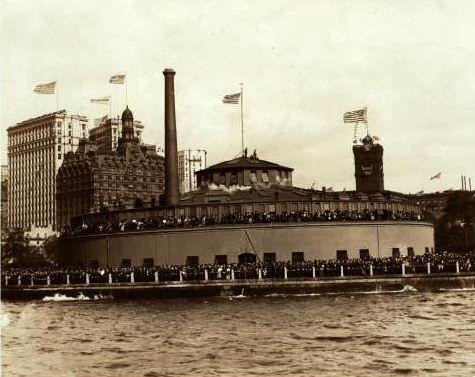
New York was the major destination for immigrants entering the United States and had been the country's largest port since the 1820s. Up until 1847, there was virtually no regulation of immigration or routine process for dealing with immigrant ships that entered the harbor.
Often, when a ship came in, a doctor stationed at Staten Island rowed out to meet the ships and made sure there were no signs of contagious diseases on board the ship. The immigrants cleared by the doctor simply had to make a declaration at customs and were landed at the docks in Manhattan. Due to these circumstances, it was difficult to provide protection for them. New York was full of people called runners who were paid by trucking firms, railroad ticket officers, and immigrant hotels and boarding houses. They were paid to lead the newcomers into the above establishments where the immigrants were often cheated and taken advantage of, sometimes by their own countrymen. The immigrants were cheated when exchanging money and they were sold tickets to incorrect destinations at inflated prices or were sold tickets that went indirectly to their destination so that they could be charged more. At the boarding houses they were often charged very high rates or their luggage was held for a price and they were not given the luggage back until they could pay for its release.
Although many organizations attempted to halt these practices, conditions in New York City were only becoming more dangerous and sad by the day. The port was so crowded that inspectors could not properly check everyone and the newcomers were constantly being swindled and robbed. Many were taken advantage of so severely that they were forced to stay in the city and seek immediate employment.
Finally, people began to call for a centralized receiving station where all immigrants could be properly inspected and also properly protected before being sent on their way to their final destination. Castle Garden was open for business in 1855. For 35 years it would serve as the chief immigration depot in the United States and was the first formal receiving station anywhere in the world. During the peak summer months, over 1,000 immigrants passed through Castle Garden each day.
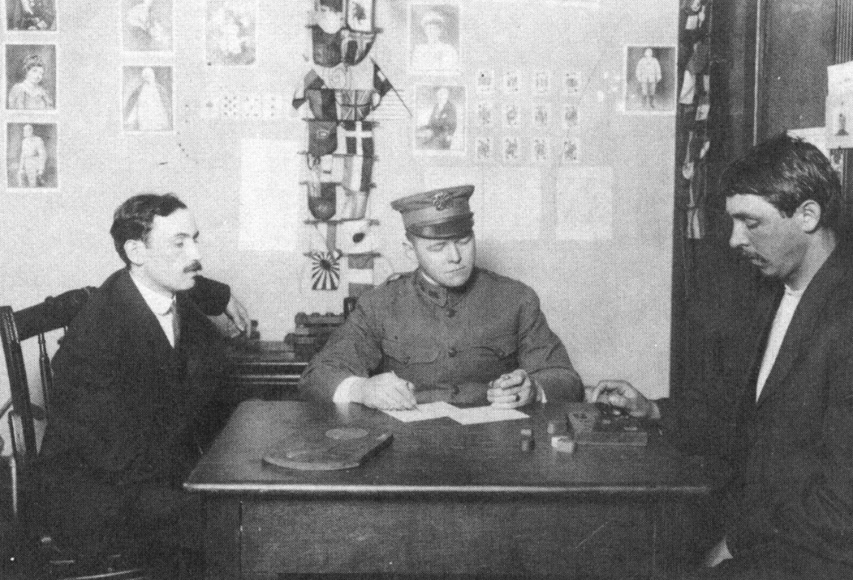
The creation of Castle Garden ensured that there was a system that all New York debarking immigrants had to go through in order to receive entry to the United States. When a ship pulled into the New York harbor it was put into quarantine. Everyone remained on the ship in the harbor until a medical inspector rowed out to meet the ship. Once on ship the inspector counted the immigrants, scanned the immigrants for signs of contagious diseases, and examined the ship's records for the details of any deaths that happened during the voyage. Once the ship passed quarantine the ship was allowed to pull near Castle Garden and drop anchor. The passengers had their baggage inspected by customs officials and it was then taken and held for them in the baggage room until they were ready to leave. The passengers themselves were then taken by barge to Castle Garden for registration. Once they landed on the docks of Castle Garden a medical officer rechecked each immigrant to determine if the health inspector missed any sick people during the quarantine check.
Then, everyone who passed inspection was taken into the main receiving hall, the rotunda, and separated into those who could and those who could not speak English. Translators were provided in several languages to help the non-English speakers get through registration. This was the area where they were actually registered. They had to give their names, nationality, ages, occupations, location of birth, final destination, religion, and the value of the property they brought with them. Once they cleared this area, they all were required to bathe with soap and water before they were released to continue on their way into the United States. There was a kitchen at Castle Garden where the newcomers could purchase items and prepare their own food. Here they could also get their money exchanged, purchase railroad tickets, receive any communication or visitors that awaited their arrival, send letters or telegrams, and meet with representatives from the various welfare organizations. Later, a small hospital was added to treat minor illnesses.
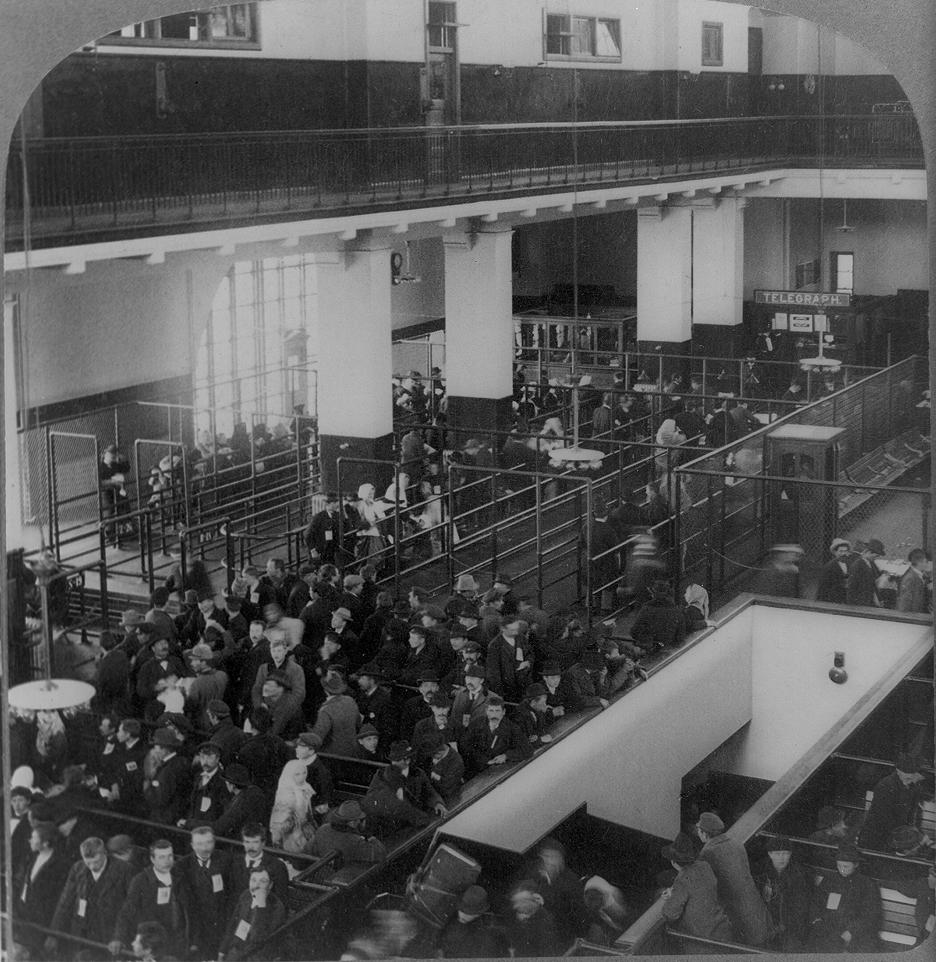
From 1855 to 1890, over 8 million people entered the United States through Castle Garden and when it closed 75% of all immigrants who landed in the United States from 1855 to 1890 had passed through its doors.
Ellis Island
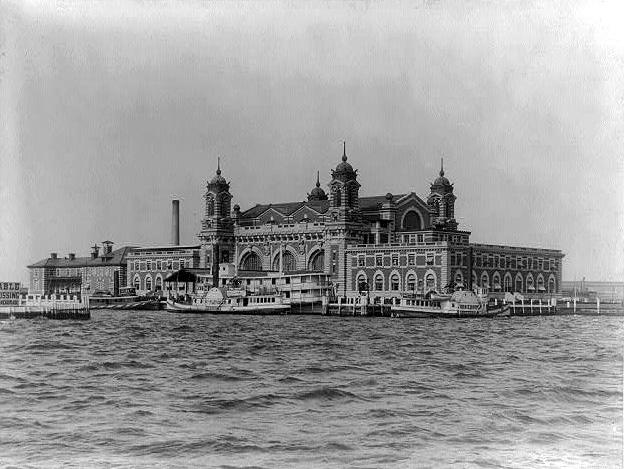
Because of new regulations, Castle Garden had to be closed down and a new entry site developed. After much debate it was decided that in order to protect the newly-landed immigrants an island would be needed for the depot so that runners and swindlers could be kept away from the ships as they arrived in port. Eventually, Ellis Island was chosen.
Ellis was not an ideal location for the new immigration depot. It was barely three acres in size, it was at sea level allowing it to flood easily, and the water surrounding the island was too shallow for a boat to dock at the island. Still, it was designated as the official site in 1890 when President Benjamin Harrison signed the law naming Ellis as the new site for a federal immigration receiving station.
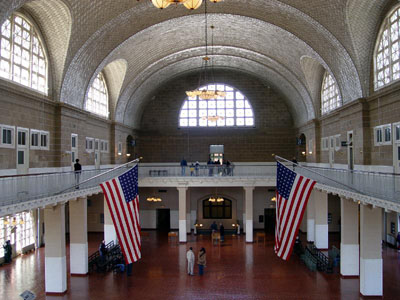
Finally, Ellis Island was complete and opened January 1, 1892 and was designed to handle up to 10,000 immigrants a day. The same sorts of activities occurred at Ellis Island -- processing, registering, etc. Even though it was designed to handle thousands of people, it was crowded and hectic. Ellis Island soon became part of American national culture and many began to forget about the important and significant role Castle Garden served for over eight million immigrants. It is true that many passed through the gates of Ellis, but many other immigrants arrived long before Ellis Island was ever constructed.

New York was the major destination for immigrants entering the United States and had been the country's largest port since the 1820s. Up until 1847, there was virtually no regulation of immigration or routine process for dealing with immigrant ships that entered the harbor.
Often, when a ship came in, a doctor stationed at Staten Island rowed out to meet the ships and made sure there were no signs of contagious diseases on board the ship. The immigrants cleared by the doctor simply had to make a declaration at customs and were landed at the docks in Manhattan. Due to these circumstances, it was difficult to provide protection for them. New York was full of people called runners who were paid by trucking firms, railroad ticket officers, and immigrant hotels and boarding houses. They were paid to lead the newcomers into the above establishments where the immigrants were often cheated and taken advantage of, sometimes by their own countrymen. The immigrants were cheated when exchanging money and they were sold tickets to incorrect destinations at inflated prices or were sold tickets that went indirectly to their destination so that they could be charged more. At the boarding houses they were often charged very high rates or their luggage was held for a price and they were not given the luggage back until they could pay for its release.
Although many organizations attempted to halt these practices, conditions in New York City were only becoming more dangerous and sad by the day. The port was so crowded that inspectors could not properly check everyone and the newcomers were constantly being swindled and robbed. Many were taken advantage of so severely that they were forced to stay in the city and seek immediate employment.
Finally, people began to call for a centralized receiving station where all immigrants could be properly inspected and also properly protected before being sent on their way to their final destination. Castle Garden was open for business in 1855. For 35 years it would serve as the chief immigration depot in the United States and was the first formal receiving station anywhere in the world. During the peak summer months, over 1,000 immigrants passed through Castle Garden each day.

The creation of Castle Garden ensured that there was a system that all New York debarking immigrants had to go through in order to receive entry to the United States. When a ship pulled into the New York harbor it was put into quarantine. Everyone remained on the ship in the harbor until a medical inspector rowed out to meet the ship. Once on ship the inspector counted the immigrants, scanned the immigrants for signs of contagious diseases, and examined the ship's records for the details of any deaths that happened during the voyage. Once the ship passed quarantine the ship was allowed to pull near Castle Garden and drop anchor. The passengers had their baggage inspected by customs officials and it was then taken and held for them in the baggage room until they were ready to leave. The passengers themselves were then taken by barge to Castle Garden for registration. Once they landed on the docks of Castle Garden a medical officer rechecked each immigrant to determine if the health inspector missed any sick people during the quarantine check.
Then, everyone who passed inspection was taken into the main receiving hall, the rotunda, and separated into those who could and those who could not speak English. Translators were provided in several languages to help the non-English speakers get through registration. This was the area where they were actually registered. They had to give their names, nationality, ages, occupations, location of birth, final destination, religion, and the value of the property they brought with them. Once they cleared this area, they all were required to bathe with soap and water before they were released to continue on their way into the United States. There was a kitchen at Castle Garden where the newcomers could purchase items and prepare their own food. Here they could also get their money exchanged, purchase railroad tickets, receive any communication or visitors that awaited their arrival, send letters or telegrams, and meet with representatives from the various welfare organizations. Later, a small hospital was added to treat minor illnesses.

From 1855 to 1890, over 8 million people entered the United States through Castle Garden and when it closed 75% of all immigrants who landed in the United States from 1855 to 1890 had passed through its doors.
Ellis Island

Because of new regulations, Castle Garden had to be closed down and a new entry site developed. After much debate it was decided that in order to protect the newly-landed immigrants an island would be needed for the depot so that runners and swindlers could be kept away from the ships as they arrived in port. Eventually, Ellis Island was chosen.
Ellis was not an ideal location for the new immigration depot. It was barely three acres in size, it was at sea level allowing it to flood easily, and the water surrounding the island was too shallow for a boat to dock at the island. Still, it was designated as the official site in 1890 when President Benjamin Harrison signed the law naming Ellis as the new site for a federal immigration receiving station.

Finally, Ellis Island was complete and opened January 1, 1892 and was designed to handle up to 10,000 immigrants a day. The same sorts of activities occurred at Ellis Island -- processing, registering, etc. Even though it was designed to handle thousands of people, it was crowded and hectic. Ellis Island soon became part of American national culture and many began to forget about the important and significant role Castle Garden served for over eight million immigrants. It is true that many passed through the gates of Ellis, but many other immigrants arrived long before Ellis Island was ever constructed.
Last modified: Monday, July 30, 2012, 7:51 PM